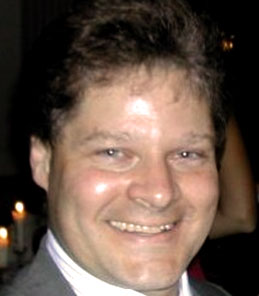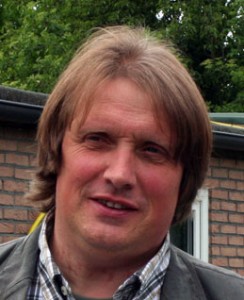Cincom Speakers at ESUG 2011
The 19th annual International Smalltalk Conference is in the heart of historic Edinburgh. The conference is August 22 – August 26 with Camp Smalltalk the weekend before on August 20 and 21.
Below are the Cincom speakers at ESUG 2011:
Arden Thomas, Cincom Smalltalk™ Product Manager

Arden Thomas started using Smalltalk in 1986 when he was researching and exploring better ways to do software development. He found it! Smalltalk and object-oriented were such a profoundly improved approach to software development, that he made a full endeavor into Smalltalk. Arden began using Smalltalk in his post-graduate work, thesis and projects, as well as building applications for factory floor control for IBM. Arden has worked for Parcplace Systems, ParcPlace-Digitalk and ObjectShare in a number of capacities including developer, trainer, architect, consultant and sales SE. Arden worked for a hedge fund that ran hundreds of applications in Cincom® VisualWorks® 24/7 to provide traders with decision-making information and tools.
Arden Thomas is currently the Cincom Smalltalk Product Manager. Arden has a blog titled “Less Is More,” which is an interesting principle, as well as a reference to an attractive Smalltalk design philosophy.
- Abstract: Cincom Smalltalk Roadmap 2011
An update on recent and future Smalltalk work at Cincom.
Andrés Valloud, Lead Cincom Smalltalk Virtual Machine Engineer
Andrés Valloud has developed in Smalltalk since 1996. He won the 2006 Smalltalk Solutions Coding Contest, ran the competition in 2007 and 2008, is one of the organizers of the Smalltalks conference, is a founding member of the FAST foundation and has written books on Smalltalk. He currently works for Cincom Systems, Inc. as a lead VM engineer.
He writes about a variety of things at http://blogten.blogspot.com.
- Abstract: Cincom VisualWorks Object Memory Management
We tend to take garbage-collection for granted. However, it is a critical factor that affects application performance. At times, it is difficult to tune the delicate interaction between the VM and the image with regards to object creation and reclamation because there are many moving parts. This presentation provides a clear picture of how object memory is managed in VisualWorks, shows how several enhancements have made the tuning task significantly easier and much more rewarding and discusses several key improvements that will make VisualWorks even better in the near future.
Martin Kobetic, Cincom Smalltalk Development Team
Martin Kobetic has been a member of the Smalltalk development team at Cincom since 2000 working primarily on various networking and security frameworks. Prior to that, he worked on TOPLink for Smalltalk (object-relational mapping) at The Object People. He received his MSc in computer science from the Comenius University, Bratislava, Slovakia in 1995. Martin has presented several times at various Smalltalk events, mostly on topics related to his work at Cincom Systems.
- Abstract: Native or External? (Lessons learned in implementing cryptography for VisualWorks)
VisualWorks has cryptographic libraries backed by both native implementations and external libraries. In this talk, we will discuss both solutions including their advantages and drawbacks. Drawing on the experience of implementing both, we will conclude with some general considerations for deciding between the two approaches.
Niall Ross, Dirk Verleysen and Andreas Hiltner, Cincom Smalltalk Engineers
Niall Ross
Niall ended his undergraduate career with two intellectual interests: computing and the theory of relativity. A quick check of how much commercial work was available to relativity and gravitation theorists made him decide to do academic research in that field and then seek a commercial job in computing, rather than the other way round.
In 1985, Niall started working commercially in IT. He was at first assigned to designing and implementing software engineering process improvements, and only three years later he began to write and deliver commercial software. This experience taught him that intelligent people can sometimes form foolish ideas about software engineering if they have not worked at the coding coalface of real, large commercial projects. Learning from this, Niall spent the nineties working on software to manage complex, rapidly changing telecom networks. A side effect of this work was that it taught him much about how scale and rate of change affect software. Early in the nineties he discovered Smalltalk. The more he used it, the more he came to recognize its power in this area. This perception was strengthened when he spent a year delivering a telecoms management system in Java.
At the end of the decade, Niall formed his own software company to offer consultancy in meta-data system design, in Smalltalk and in agile methods. Over the next decade, he worked on a variety of meta-data-driven systems, mostly in the financial domain. He also led the Custom Refactoring open-source project and recently the SUnit open-source project.
Niall joined the Cincom Smalltalk Engineering team nearly three years ago. He leads the team that does the weekly VisualWorks builds―an experience he likens to doing brain surgery on yourself every Friday (e.g., “prepare new memory, remove old memory―uh, I can’t remember what I was going to do next …”).
Dirk Verleysen
 Dirk has 23 years of experience working for various industrial and consulting companies and doing projects in different Smalltalks (Cincom® ObjectStudio®, VisualWorks, Smalltalk/V and VA Smalltalk). Some of the many companies Dirk has consulted for include Fabelta Ninove, Infosoft, Sanpareil, Roots, KBC Assett Management, Argo and ADP.
Dirk has 23 years of experience working for various industrial and consulting companies and doing projects in different Smalltalks (Cincom® ObjectStudio®, VisualWorks, Smalltalk/V and VA Smalltalk). Some of the many companies Dirk has consulted for include Fabelta Ninove, Infosoft, Sanpareil, Roots, KBC Assett Management, Argo and ADP.
Dirk joined Cincom Systems, Inc. in 2008 as lead developer for the Modeling and Mapping Tool in ObjectStudio. The Modeling Tool allows a business architect to design and generate the framework for a software system using a powerful UML base tool. The Mapping Tool connects your Smalltalk objects to relational databases the easy way. It also allows an easy connection from relational databases to objects and applications using the object relational mapping technology GLORP.
Andreas Hiltner
Andreas started his career at the IT academy of Germany’s largest mail-order company. Besides knowledge in mainframes and *NIX systems, he soon became an expert in distributed transactions, parallel-processing and databases servers. He is currently the lead VM engineer for ObjectStudio Smalltalk, in addition to having a hand in most aspects of base image and database development. He works from home near Nuremberg, Germany, where he just recently returned after spending five years with his family in the US at Cincom’s headquarters in Cincinnati, Ohio.
Along with many contributions to ObjectStudio over the years, he was the project lead in Cincom’s development of the current 8.x versions of ObjectStudio, based on VisualWorks. Andreas is a seasoned architect who has specialized in Cincom ObjectStudio for almost 15 years. In his years of working with Cincom he has had the opportunity to assist key Cincom Smalltalk users worldwide including one the of world’s top 5 financial institutions, and several government agencies.”
- Abstract: Making the Past Serve Your Future
It has been claimed that Ruby-on-Rails means when you come off the rails, you are in the wilderness―all of that speed is suddenly replaced with hacking through a jungle. One such jungle is caused by legacy apps that you must exploit and can’t replace. Ever been in a customer discussion like this?“We need you to build us this new web app yesterday. By the way, the new system must get a little of its data from the old X app, and write some to it―and the same for the old Y app. No, we can’t replace those apps for years yet; other units depend on them. No we don’t have schemas for their relational database back ends; our staff knows what the data means when it appears on their screens. We got them as minimum budget bespoke a few years back. Not sure that the companies are still around. Dave in IT support knows something about it. He says the core of Y was written by a foreign company and the table and column names aren’t English. We’ll retire them eventually, but in the meantime, we’ve got to add this new web app for the new function now.”We will present a specific medical domain and a specific web application where this kind of thing is all too real of a problem, making it hard to deliver vital new functions into an existing situation. Cincom Smalltalk’s tools combine the Active Record pattern with the Glorp framework. The approach is specifically designed to keep you moving fast when you are off the rails in the legacy jungle. Using this specific example, we will walk you through how we do that.The talk will show how a wide range of Cincom Smalltalk functions (modeling, RDB-mapping, web applications) interact to deliver a functional increment.
Tom Robinson, Senior Software Engineer for the Cincom Smalltalk Build Process
Tom Robinson started learning Smalltalk/V in 1987. He got his first Smalltalk job working on a factory floor application in 1991. He has worked on manufacturing, insurance, banking and investment applications since then. For the past three years, he has been working at Cincom as a Senior Software Engineer on the Cincom Smalltalk build process, weekly post build testing and Store. His office features a wood stove and has a view of 3,865-meter Hawk Peak in the Snowmass-Maroon Bells Wilderness of Colorado.
- Abstract: Store Beyond Glorp – What’s Next
Since the release of Cincom VisualWorks version 7.8, all of the Store source code management system and related tools have been migrated to use the Glorp object-relational mapping framework. The completion of this migration offers opportunities for the VisualWorks engineering team and for VisualWorks users, but it also raises issues for both. Tom will discuss some of the new opportunities created by the migration, existing issues that the migration will help solve and new issues that the migration has created or exposed. Attendees will learn the following:- – How to use Glorp to query Store, for those occasional ad hoc queries (or repairs or migrations) not (yet) provided by current tools
- – Store improvements that can be expected from Cincom in the near future in the areas of functionality, speed and reliability
- – How Glorp is likely to benefit from the Store-Glorp migration
Julian Fitzell, Cincom Smalltalk Consultant
Best known as one of the creators and current maintainers of the Seaside web application framework, Julian currently works for Cincom Systems in London, UK.
- Abstract: ChannelStream: The Challenges of Continuously Delivering
Cincom has been delivering ChannelStream—its Document Output Management product—continuously to customers almost since day one. Using Smalltalk, a small team was able to turn out regular working iterations at an amazing pace. As the project grows and team members are added, we continue to manage regular deliveries. However, automation has become increasingly important and the effort required to integrate common build automation tools with our Smalltalk development environment is a real challenge. This case study will discuss our progress toward build automation and continuous delivery and will highlight issues we faced, solutions we found and challenges that still remain. It will also ask whether the Smalltalk community should be integrating with existing tools, collaborating on a made-for-Smalltalk solution or carrying on the current roll-your-own model of application deployment.
